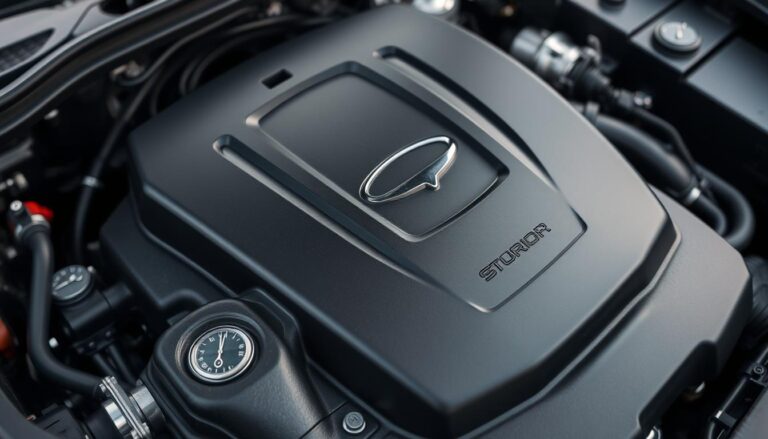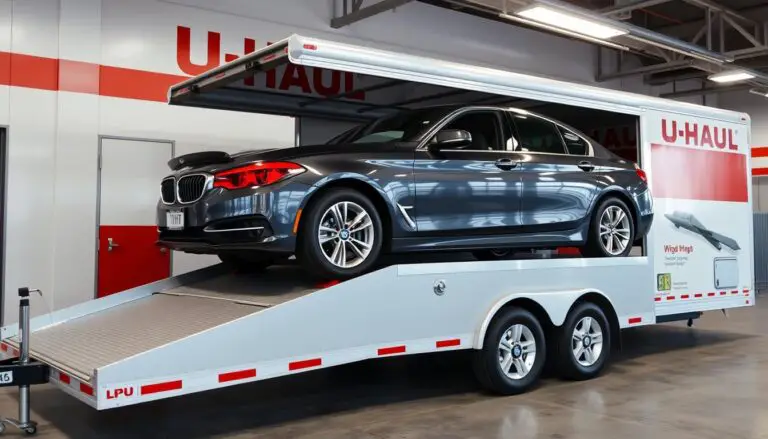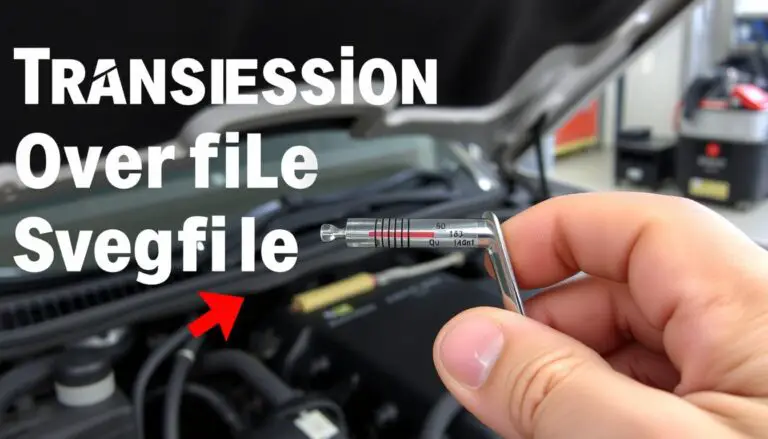Understanding the differences between scuffs and scratches on your car’s surface is crucial for maintaining its appearance and longevity. Car surface damage can occur due to various reasons, including minor accidents, environmental factors, or simple wear and tear.
Scratches and scuffs, though often used interchangeably, have distinct characteristics and require different automotive paint repair approaches. Knowing how to identify and address these issues can save you time and money. For a detailed guide on how to buff out scratches, you can refer to this comprehensive DIY guide.
Key Takeaways
- Identify the type of damage on your car’s surface.
- Understand the appropriate repair method for scuffs and scratches.
- Learn how to maintain your car’s appearance.
- Discover cost-effective ways to repair car surface damage.
- Explore DIY methods for automotive paint repair.
Understanding Car Surface Damage
Understanding the types and causes of car surface damage is crucial for maintaining a vehicle’s appearance and value. Car surface damage can occur due to various factors, and it’s essential to identify the causes to take preventive measures.
Common Causes of Exterior Damage
The exterior of a vehicle is prone to damage from several sources. Some common causes include:
- Accidents and collisions
- Environmental factors such as hail, UV rays, and extreme temperatures
- Wear and tear from daily use
- Road debris and gravel
For instance, a minor collision can cause significant damage to a car’s surface, as highlighted in the article on what is considered a big scratch on a.
Impact on Vehicle Value and Appearance
Car surface damage can significantly impact a vehicle’s value and appearance. If left unrepaired, damage can lead to:
- Rust and further deterioration
- A decrease in the vehicle’s resale value
- An unsightly appearance that can be embarrassing for the owner
Assessing the damage and taking prompt action is vital to maintaining the vehicle’s condition and value. Regular vehicle damage assessment can help identify issues early on.
Scuffs vs Scratches on a Car: Types and How To Repair Them
Scuffs and scratches are two types of damage that can affect a car’s appearance, but they have distinct characteristics. Understanding these differences is crucial for selecting the appropriate repair method.
Defining Scuffs: Characteristics and Identification
Scuffs are typically surface-level damages that result from friction or rubbing against another object. They often appear as marks or discolorations on the car’s surface without penetrating the paint layer. To identify a scuff, look for areas where the paint has been rubbed off or discolored but remains intact.
Common characteristics of scuffs include:
- Surface-level damage
- Discoloration or marking
- No penetration through the paint layer
Defining Scratches: Characteristics and Identification
Scratches, on the other hand, are more severe and involve actual damage to the paint layer, potentially exposing the underlying metal or primer. Scratches can be identified by their depth and the presence of rough edges. For more information on the types of car scratches, you can visit this resource.
Key characteristics of scratches include:
| Characteristic | Description |
|---|---|
| Depth | Penetration through the paint layer |
| Edges | Rough or jagged edges |
| Exposure | Potential exposure of underlying layers |

For DIY repair, it’s essential to correctly identify whether the damage is a scuff or a scratch to apply the appropriate repair technique. This distinction will guide the choice of materials and methods for effective repair.
Assessing the Severity of Surface Damage
The first step in addressing surface damage on vehicles is to accurately assess its severity. This assessment is crucial for determining whether a DIY repair is feasible or if professional help is needed.
The Fingernail Test for Damage Depth
A simple method to gauge the depth of the damage is the fingernail test. By running your fingernail over the damaged area, you can determine if it’s a superficial scuff or a deeper scratch. If your nail catches on the edge of the damage, it’s likely more than just a surface issue.

Clear Coat vs. Paint vs. Metal Damage
Understanding the layers of your car’s exterior is vital. Damage can be limited to the clear coat, extend into the paint, or even reach the metal. Each layer requires a different approach for repair. Assessing which layer is affected will guide your repair strategy.
When to DIY vs. When to Seek Professional Help
Once you’ve assessed the damage, you can decide on the best course of action. Minor scuffs might be easily fixed at home, but deeper scratches or damage that has penetrated to the metal may require professional car detailing services. Knowing when to DIY and when to seek help is key to a successful repair.
DIY Repair Methods for Scuffs
Removing scuffs from your car’s surface is a manageable DIY project that requires some basic knowledge and the correct equipment. With a DIY repair, you can save money and gain the satisfaction of maintaining your vehicle’s appearance. This section will guide you through the necessary tools and materials, a step-by-step scuff removal process, and provide tips for achieving professional-looking results.
Required Tools and Materials
To effectively remove scuffs, you’ll need a few basic tools and materials. These include a soft, clean cloth, a scuff remover or rubbing compound, a buffer or polishing pad, and a protective wax or sealant. Ensure you choose products suitable for your car’s paint type to avoid further damage.
Step-by-Step Scuff Removal Process
Follow these steps to remove scuffs from your car’s surface:
1. Cleaning the Affected Area
Begin by thoroughly cleaning the scuffed area with soap and water to remove any dirt or debris. Dry the area completely before proceeding to avoid scratching the surface.
2. Applying Compound and Buffing
Apply a small amount of scuff remover or rubbing compound to the affected area. Using a buffer or polishing pad, gently buff the area in a circular motion until the scuff is removed. Be cautious not to apply too much pressure, which can damage the paint.
3. Polishing and Protecting
Once the scuff is removed, use a polish to restore the shine and apply a protective wax or sealant to safeguard the area against future damage.
4. Safety Precautions
Always wear protective gloves and eyewear when performing DIY repairs. Work in a well-ventilated area to avoid inhaling fumes from chemicals.
Tips for Achieving Professional Results
To achieve a professional finish, ensure that each step is done meticulously. Use the right products for your car’s paint, and don’t rush the process. Inspect your work under different lighting conditions to ensure the scuff is completely removed and the area blends with the surrounding paint.
DIY Repair Methods for Scratches
With a few simple steps, you can repair scratches on your car without needing professional help. DIY repair methods for scratches are cost-effective and can be accomplished with the right tools and techniques.
Required Tools and Materials
To start the repair, you’ll need a few essential tools and materials. These include a scratch remover or touch-up paint, sandpaper, a clear coat, and a buffing compound. For more detailed information on buffing out scratches, you can refer to this guide on buffing out scratches on your car in 5.
Step-by-Step Scratch Repair Process
The scratch repair process involves several key steps:
-
1. Preparing the Surface
Clean the scratched area thoroughly to remove any dirt or debris. Use a mild soap and water, and dry the area completely before proceeding.
-
2. Filling and Sanding
Apply a scratch filler or touch-up paint to the affected area. Allow it to dry, then sand it down to a smooth finish using progressively finer grits of sandpaper.
-
3. Painting and Clear Coat Application
If necessary, apply a coat of paint to match the surrounding area. Once dry, apply a clear coat to protect the paint and give it a glossy finish.
-
4. Final Buffing and Blending
Use a buffing compound to blend the repaired area with the surrounding paint. This will help to remove any minor imperfections and leave a smooth finish.
Tips for Color Matching and Blending
To achieve a seamless repair, it’s crucial to match the paint color accurately. Use the manufacturer’s paint code to find the exact match. When blending the repaired area, use a gentle buffing motion to merge it with the surrounding paint.
Professional Repair Options and Costs
When it comes to restoring your vehicle’s appearance, understanding the available professional repair options is crucial. For car owners dealing with scuffs and scratches, knowing when to opt for detailing services versus body shop repairs can make a significant difference in both the outcome and the cost.
Detailing Services for Minor Damage
Detailing services are ideal for minor scuffs and scratches that haven’t penetrated deeply into the paint. These services typically include paint correction, polishing, and protective coatings to restore the vehicle’s appearance. A professional detailer can effectively remove minor imperfections, enhancing the vehicle’s overall look without the need for extensive repairs.
Body Shop Repairs for Deeper Damage
For more significant damage that involves deeper scratches or paint chips, body shop repairs are often necessary. These repairs can include repainting the affected area, replacing damaged panels, and other corrective measures to return the vehicle to its original condition. Body shops have the equipment and expertise to handle complex repairs.
Cost Comparison and Insurance Considerations
The cost of professional repairs varies widely depending on the extent of the damage and the service provider. Detailing services for minor damage can range from $100 to $500, while body shop repairs can cost anywhere from $500 to several thousand dollars. It’s essential to consider whether the damage is covered under your insurance policy, as comprehensive coverage may include repair costs for certain types of damage.
| Service Type | Typical Cost Range | Insurance Coverage |
|---|---|---|
| Detailing Services | $100 – $500 | Not typically covered |
| Body Shop Repairs | $500 – $3,000+ | May be covered under comprehensive insurance |
Conclusion
Understanding the differences between scuffs and scratches on your car is crucial for maintaining its appearance and value. By identifying the type and severity of the damage, you can choose the most effective repair method.
Both DIY and professional repair methods have their advantages. DIY repairs can be cost-effective for minor damage, while professional services are recommended for more extensive or complex repairs. By addressing car surface damage promptly, you can prevent further deterioration and maintain your vehicle’s overall condition.
Effective repair methods, whether DIY or professional, require the right techniques and materials. By applying the knowledge gained from this article, you can make informed decisions about car surface damage repair methods and keep your vehicle looking its best.
FAQ
What is the difference between a scuff and a scratch on a car?
A scuff is a superficial mark or abrasion on the surface of the car’s paint or clear coat, whereas a scratch is a more significant damage that penetrates deeper into the paint or even the metal.
How can I identify if the damage on my car is a scuff or a scratch?
You can use the fingernail test to determine the depth of the damage. If your fingernail catches on the damage, it’s likely a scratch. If it doesn’t, it might be a scuff.
Can I repair scuffs and scratches on my car myself?
Yes, you can repair minor scuffs and scratches yourself using DIY methods, but more extensive damage may require professional help from a detailing service or a body shop.
What are the necessary tools and materials for DIY scuff and scratch repair?
For scuff repair, you’ll need a cleaning solution, a compound, and a buffer. For scratch repair, you’ll need a filler, sandpaper, paint, and a clear coat.
How do I know when to seek professional help for car surface damage?
If the damage is deep, extensive, or you’re unsure about how to repair it, it’s best to seek professional help to avoid further damage or costly repairs.
Will insurance cover the cost of repairing scuffs and scratches on my car?
It depends on your insurance policy and the circumstances surrounding the damage. You should check with your insurance provider to determine the extent of your coverage.
How can I prevent scuffs and scratches on my car’s surface?
Regular washing and waxing, parking in a safe location, and being mindful of your surroundings can help prevent scuffs and scratches.
Can I repair scuffs and scratches on my car’s surface without affecting the original paint job?
With the right techniques and materials, it’s possible to repair scuffs and scratches without compromising the original paint job. However, it may require some skill and patience.


